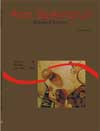<b>Estrutura populacional de peixes no estuário do rio Caeté, Bragança, Pará, Brasil</b> - DOI: 10.4025/actascibiolsci.v20i0.4469
Abstract
This study describes the relative size and age structure of the sciaenids Macrodon ancylodon, Stellifer rastrifer and Stellifer naso, the ariid Cathorops spixii and the aspredinid Aspredo aspredo in the estuary of the Caeté River. Four bimonthly samples were collected with trawl and gill nets during August, October and December 1996 and February 1997 in three different areas: (A) main river channel, (B) bay, and (C) coastal areas. Total length and weight of 16,298 individuals of all these species were recorded. Monthly frequency distributions were plotted. Cohorts were identified by dividing the distribution into separate normal distributions; asymptotic length (L∞) and K were estimated for these stocks by FISAT program. Biomass averages (g/m2) were estimated using the swept area method. Average biomass of Macrodon ancylodon was 0.29g/m2, total length ranged from 3cm to 41cm; length frequencies identified five cohorts; L∞ = 45.50cm and K = 0.491 year-1. For Stellifer rastrifer, average biomass was 0.31 g/m2; total lengths ranged from 1 to 17cm; L∞ = 22.5cm and K = 0.31 year-1. For Stellifer naso, average biomass was 0.03 g/m2 ; L∞ = 26.3cm and K = 0.321 year-1, total lengths ranged from 2 to 25cm. For Cathorops spixii, average biomass was 0.55 g/m2; L∞ = 33.3cm and K = 0,36 year-1; density was much higher in the river habitats. Aspredo aspredo presented a biomass of 0.06 g/m2; abundance was higher in the river; total lengths ranged from 2 to 36cm; L∞ = 42.5cm and K = 0.35 year-1. Despite the different biological strategies of each species with respect to spatial distribution and relative abundance, they all utilize the estuarine habitat as nursery grounds in the early phases of their life cycles.Downloads
Download data is not yet available.
Published
2008-07-21
How to Cite
Camargo-Zorro, M., & Isaac, V. J. (2008). <b>Estrutura populacional de peixes no estuário do rio Caeté, Bragança, Pará, Brasil</b> - DOI: 10.4025/actascibiolsci.v20i0.4469. Acta Scientiarum. Biological Sciences, 20, 171-177. https://doi.org/10.4025/actascibiolsci.v20i0.4469
Issue
Section
Biology Sciences
DECLARATION OF ORIGINALITY AND COPYRIGHTS
I Declare that current article is original and has not been submitted for publication, in part or in whole, to any other national or international journal.
The copyrights belong exclusively to the authors. Published content is licensed under Creative Commons Attribution 4.0 (CC BY 4.0) guidelines, which allows sharing (copy and distribution of the material in any medium or format) and adaptation (remix, transform, and build upon the material) for any purpose, even commercially, under the terms of attribution.
Read this link for further information on how to use CC BY 4.0 properly.
0.6
2019CiteScore
31st percentile
Powered by 

0.6
2019CiteScore
31st percentile
Powered by 











1.png)




3.png)













